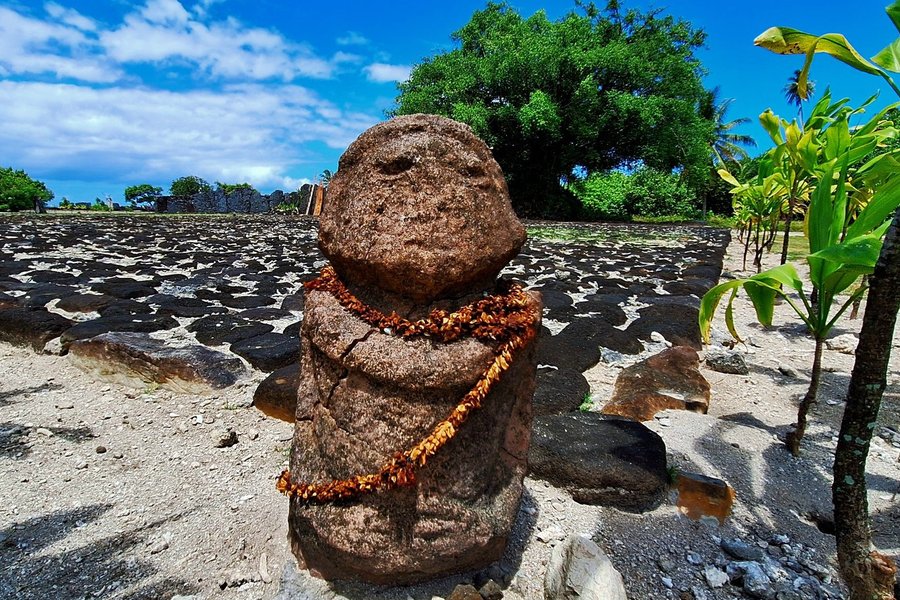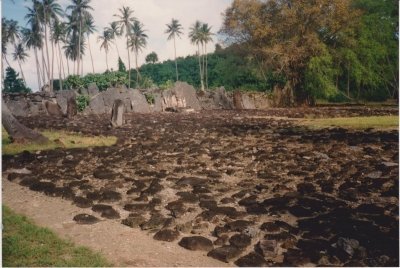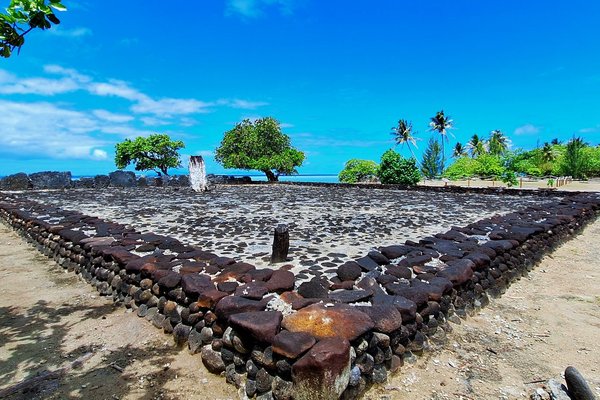France
Taputapuātea
Taputapuātea is a sacral site and cultural land- and seascape on Ra’iatea Island, part of the Society Islands.
The site consists of several archaeological sites and marae (temples). Its main feature is the Taputapuātea marae complex, constructed in the 14th -18th centuries, which is considered the central temple of Eastern Polynesia and has a strong oral tradition connected with it. It was built between land and sea at the end of a peninsula. The marae are of continuing importance to living Polynesian culture.
Community Perspective: Dennis visited already in 1991 and advised coming with a knowledgeable guide.
Site Info
Official Information
- Full Name
- Taputapuātea (ID: 1529)
- Country
- France
- Status
-
Inscribed 2017
Site history
History of Taputapuātea
- 2017: Inscribed
- Inscribed
- Type
- Cultural
- Criteria
- iii
- iv
- vi
Links
- UNESCO
- whc.unesco.org
- Official
-
- tahitiheritage.pf — Tahiti heritage - Marae Taputapuatea de Raiatea
All Links
UNESCO.org
- whc.unesco.org — whc.unesco.org/
Official Website
- tahitiheritage.pf — Tahiti heritage - Marae Taputapuatea de Raiatea
Community Information
- Community Category
- Archaeological site: Pacific
- Cultural Landscape: Associative
Travel Information
Recent Connections
-
Austronesian cultures
Tahitian
-
Perfect Inscriptions
2017 -
Taboo
Has Tapu (sacred or forbidden) in its n…
Connections of Taputapuātea
- Individual People
-
-
Captain James Cook
Late in 18th century, Europeans made contact with the Polynesians. Captain James Cook was brought to Taputapuātea by the navigator-priest Tupaia. Members of Cook’s crew have left descriptions of the marae complex (AB ev)
-
- Geography
-
-
Polynesia
French Polynesia -
Pacific Ocean
-
Situated in one of the SIDS
French Polynesia -
Dependent territories
Located on the The Society Islands, which is part of French Polynesia - an overseas collectivity of the French Republic -
Isolated WHS
Ca 1,424 km from Marquesas (Hiva Oa)
-
- Trivia
-
-
Cultural sites closely connected to volcanoes
On a volcanic island -
Minority communities
Eastern Polynesians within France
-
- Architecture
- World Heritage Process
-
-
Perfect Inscriptions
2017
-
- Religion and Belief
-
-
Holiest place
As the ancestral homeland of Polynesian culture, Taputapuātea is of outstanding significance for people throughout the whole of Polynesia, for the way it symbolises their origins, connects them with ancestors and as an expression of their spirituality (AB ev) -
Taboo
Has Tapu (sacred or forbidden) in its nameSee fr.wikipedia.org
-
Sacred Mountains
Tea’etapu and ‘Ōrofātiu -
Living indigenous religions
... Polynesians who come in pilgrimage to the ancestral home of mā’ohi civilization. (AB ev)
-
- Human Activity
-
-
Austronesian cultures
Tahitian
-
Human Migration
Connected to human expansion into eastern Polynesia by ocean-going canoe
-
- WHS on Other Lists
-
-
UN list of Non-Self-Governing Territories
French Polynesia - France -
Located in a TCC Territory
French Polynesia
-
- Timeline
-
-
Built in the 14th century
the marae Taputapuātea has seen at least two stages of construction from the 14th to the 18th centuries, with the ahu being expanded greatly (AB ev)
-
News
No news.
Community Reviews
Show full reviews
visited june 2018.
a once in a lifetime visit to an amazing site. having read about the site being introduced as a new world heritage location i decided i had to visit for myself.
after 5 flights, 2 ferries and 3 car rentals the site did not disappoint.
a very simple, easy and beautiful drive from the main village of uturoa.
the marae complex is on the southeast coast of raiatea on a gorgeous lagoon. it is possible to see the break in the reef beyond to see how the ancient peoples would have navigated to the site by boat.
i was lucky enough to travel around other islands to familiarize myself with the polynesian culture before arriving at the ultimate site known throughout all of polynesia as a sacred complex.
Keep reading 0 comments
We visited Taputapuatea in 1991 when we had a short vacation on Raiatea. Taputapuatea is a set of ancient Polynesian marae, which you can think of as a large open air stone temple. It was the principal marae of the ancient Polynesian culture, the one to which chiefs from all over had to return to for their coronation. The most prominent marae on the site was dedicated to the Ora, the Polynesian god of war. Some of the features here were some important tall stones in the courtyard in front of the main temple, for instance the chief's stone (which he would stand in front of to protect his back) and the human sacrifice stone. If the first blood of the sacrifice didn't seem to satisfy the gods, they would go to the nearby scraping rock to bloody him up more. Another feature of this site was the coronation rock for the Polynesian chiefs. There were also smaller marae on the site, including one to the sea/harbor/fishing god. This marae has a beautiful ocean-front site, and it was really a privilege to visit this important archaeological site.
Taputapuatea is one of those places where the visit is very much enhanced with a knowledgeable guide. Without an expert to explain the site's significance, it wouldn't have been nearly as interesting. We were lucky to have anthropologist Bill Kolans as our private guide. He had been living on the Raiatea since 1969 and studying the Polynesian people. He was such an …
Keep reading 0 comments
